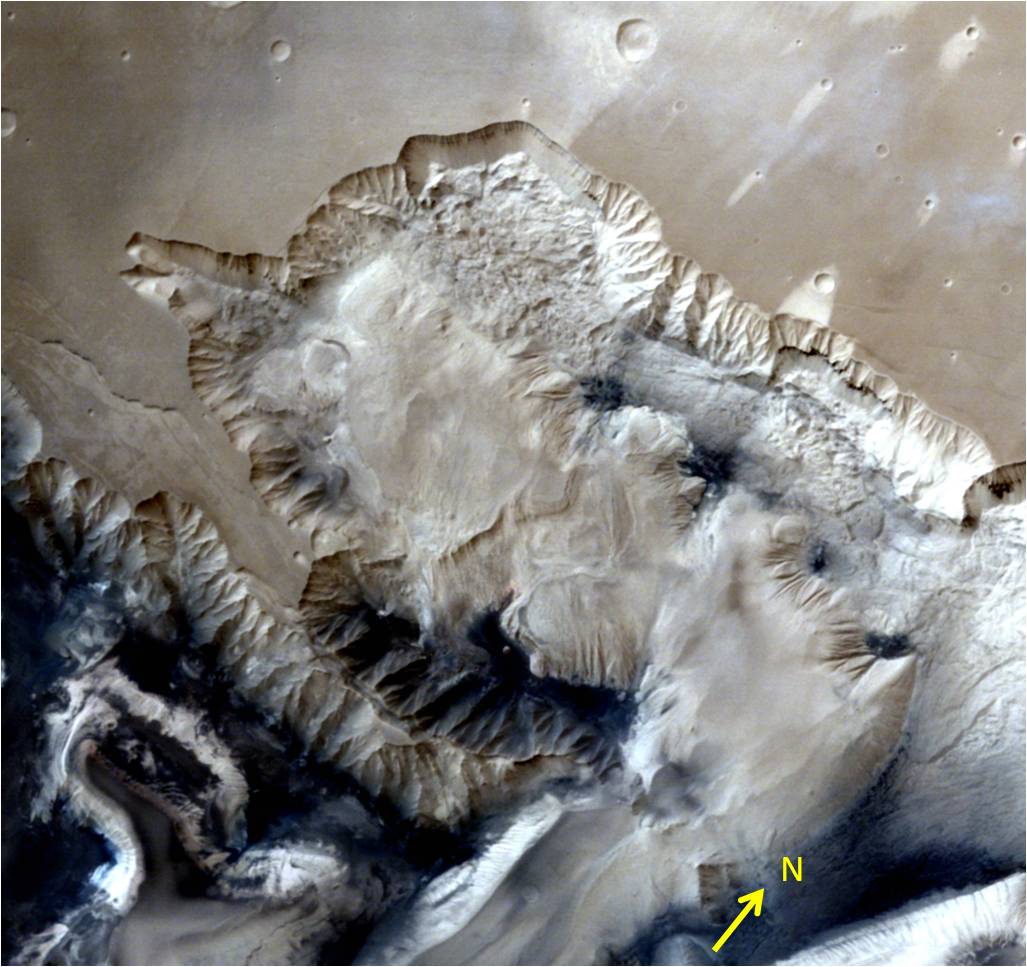

India’s Mars Orbiter Mission (MOM) recently captured images of Ophir Chasma, part of the largest canyon system in the solar system—Valles Marineris. Taken on July 19, 2015 from an altitude of 1,154 miles (1,857 km), with a resolution of 0.06 miles (96 meters), researchers from the Indian Space Research Organisation (ISRO) also reconstructed the view in 3D to show how the canyons might look from nearby.
The breathtaking view features several valleys, which are comprised of many distinct layers. The “walls” have been dissected by landslides forming reentrants.
Some researchers believe that the layers were forged by water that once filled the canyons, because chaotic terrain on the Red Planet is often connected to outflow channels, there is some indication that large subsurface water reservoirs once thrived on Mars. Additionally, the floor of the canyon shows morphological evidence of volcanic, fluvial and even glacial activity.

Ophir Chasma, which is about 197 miles (317 km) long and 19 miles (30 km) wide, is located in the Coprates quadrangle. Although the region has been mapped in detail by missions like NASA’s Mars Reconnaissance Orbiter and the ESA’s Mars Express, its geological history largely remains unknown.